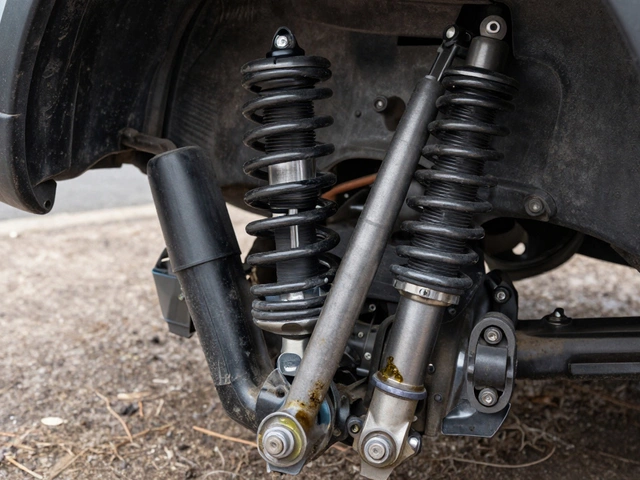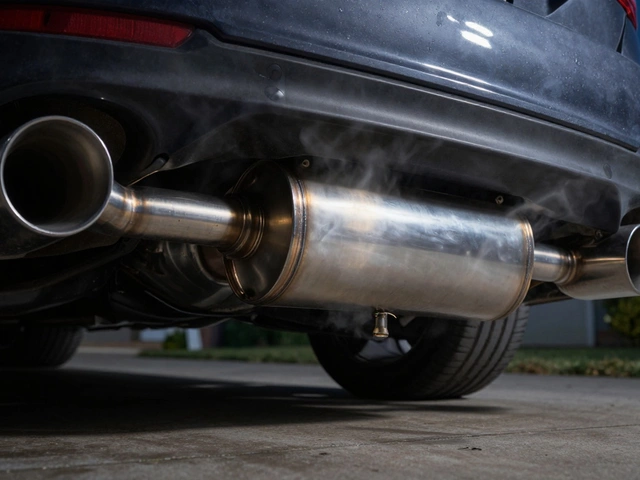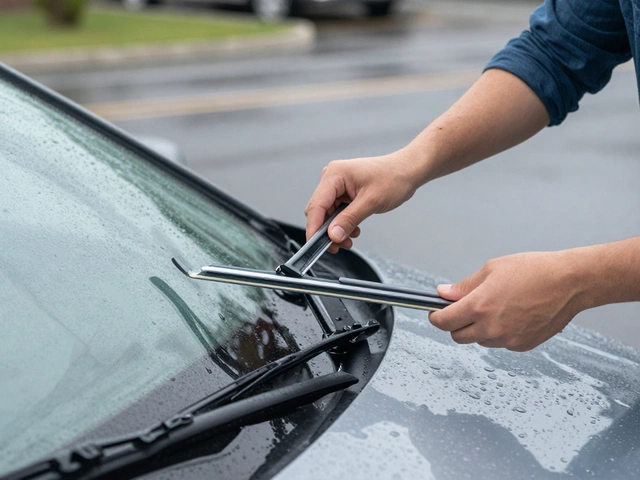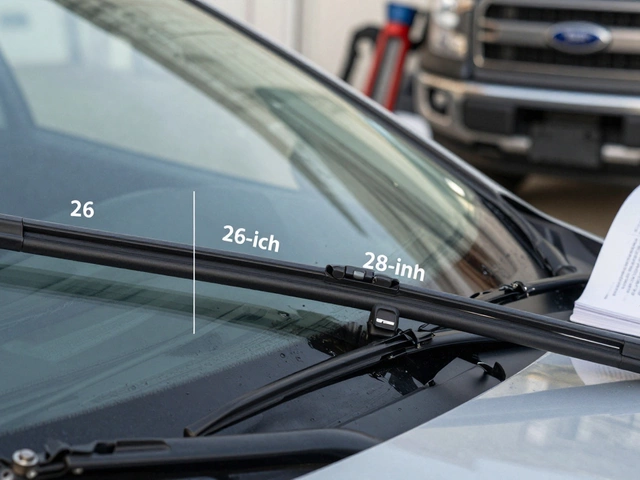Feel a shake in your steering wheel at stoplights? Maybe your car hesitates when you hit the gas? Bad spark plugs might be the silent culprits. They seem tiny and cheap, but ignoring them can turn an average commute into a nightmare—and a routine repair bill into a wallet-drainer.
Spark plugs create the spark that fires up the fuel in your engine. When they’re on their last legs, your engine starts missing beats. That means wasted fuel, more trips to the pump, and a greater chance you’ll get stuck on the side of the road. Sometimes you’ll hear weird pops or notice your check engine light is suddenly shining bright. Even your catalytic converter—the part that keeps your exhaust clean—can take a hit if bad plugs stick around too long.
Don’t shrug it off. Checking (and swapping out) old spark plugs can unlock better mileage, smoother rides, and even more engine power. Small part, big difference.
- How Spark Plugs Work and Why They Matter
- What Happens When Spark Plugs Go Bad
- Warning Signs You Shouldn't Ignore
- Real-Life Consequences: From Poor Mileage to Engine Damage
- Pro Tips to Avoid Trouble
- When and How to Replace Spark Plugs
How Spark Plugs Work and Why They Matter
Imagine your car’s engine as a giant air pump that needs a tiny explosion in each cylinder to run right. Spark plugs make those explosions happen. Every time you turn the key, spark plugs zap a high-voltage spark that lights up the air-fuel mixture in the engine’s cylinders. This tiny pop is what gets your pistons moving and your car rolling.
Without working spark plugs, your engine either chugs, hesitates, or won’t fire up at all. A single bad plug can throw off the whole rhythm, making your engine run rough or misfire. Now, think about this: a typical four-cylinder car will fire its spark plugs thousands of times just during a short trip to the grocery store. That’s why these little parts have such a big impact.
Bad spark plugs don't just leave you stranded. They can mess up your fuel mileage, drive up emissions, and even cause costly parts like the catalytic converter to fail early. Keeping them in good shape means your engine starts easily, runs smoother, and burns less gas overall.
If you’re curious about what spark plugs go through, check out this data on average life cycles and replacement intervals:
| Type of Spark Plug | Average Lifespan | Recommended Service Interval |
|---|---|---|
| Copper | 20,000 - 30,000 miles | Every 20,000 miles |
| Platinum | 60,000 miles | Every 60,000 miles |
| Iridium | 100,000 miles | Every 100,000 miles |
Modern cars can go a while between spark plug swaps, but don’t push your luck. Old or faulty plugs always end up causing more problems than they’re worth. Stay on top of them and you’ll avoid a ton of mess and expense down the line.
What Happens When Spark Plugs Go Bad
When spark plugs wear out, they stop firing as they should. That means your engine might skip a beat, run rough, or even just give up on starting, especially on a cold morning. This all boils down to unstable combustion—basically, your car’s engine isn’t burning fuel the way it was designed to.
The most obvious sign? An engine misfire. You’ll feel it as a sudden shake, stutter, or loss of power. Over time, these misfires can make your car guzzle more gas, and that extra fuel doesn’t even get you down the road any faster. It just burns in the exhaust, which can heat things up so much that you risk melting your catalytic converter—a repair that can run over $1,000 depending on your ride.
If you think only old clunkers get hit by this, think again. Even newer cars aren’t safe, especially if you drive in lots of stop-and-go traffic or let oil leaks hang around. Here’s what typically takes a hit when you run with bad spark plugs:
- Fuel efficiency drops—sometimes by up to 30%.
- Hard starts, especially in cold or wet weather.
- Rough idling and weird engine noises.
- Check engine light comes on for misfires.
- Unburned fuel can clog up expensive sensors and your catalytic converter.
To give you a better idea how much a bad spark plug can mess with your car, check out these data points:
| Problem | Possible Impact |
|---|---|
| Drop in mileage | 10-30% less fuel efficiency |
| Emissions increase | Up to 4x more pollutants |
| Catalytic converter damage | $950–$2,500 in repairs |
| Rough starts | Up to 60% longer cranking time |
Letting faulty plugs linger means living with more shakes, more trips to the pump, and potentially a big repair bill. Not worth it for a part that usually costs less than a tank of gas to swap out.
Warning Signs You Shouldn't Ignore
Driving with bad spark plugs doesn’t always mean your engine will just cut out. Usually, your car throws little hints at you before things get serious. Catching these signs early might save you from a massive headache (and a fat repair bill).
- Engine Misfire: Ever feel your car jerk or hesitate, especially when you’re trying to speed up? That’s a misfire, and worn spark plugs are often the cause. If it happens often, your engine is struggling to burn fuel the right way.
- Hard Starts: If it suddenly feels like a workout just to start your car, those old plugs may not be giving a strong enough spark.
- Poor Fuel Economy: Running on bad plugs means your engine burns more gas than it should. Spot your mileage dropping for no good reason? Don’t blame it on the gas station—check your spark plugs.
- Rough Idling: When your car shakes and rumbles at a stop or in park, that’s not normal. Rough idling usually comes from misfiring plugs.
- Weird Noises: Hear a popping or rattling sound from your engine? Old plugs can make engines sound like they’re grumbling or off beat.
- Check Engine Light: This one’s easy to overlook but super important. If it flashes or stays on, a failing spark plug is a common reason—especially if combined with any other symptoms here.
Check out this quick reference for what you might notice on the dashboard or under the hood:
| Warning Sign | What You Might Hear/Feel |
|---|---|
| Engine Misfire | Jerking, hesitation |
| Hard Starts | Long cranking, struggling engine |
| Poor Fuel Economy | More trips to the gas pump |
| Rough Idling | Vibration, shaking |
| Weird Noises | Popping, rattling |
| Check Engine Light | Light flashing or steady |
If you notice more than one of these at once, don’t shrug it off. The sooner you swap out those spark plugs, the less likely you’ll end up stuck or paying big for other repairs. Paying attention now keeps your car humming tomorrow.
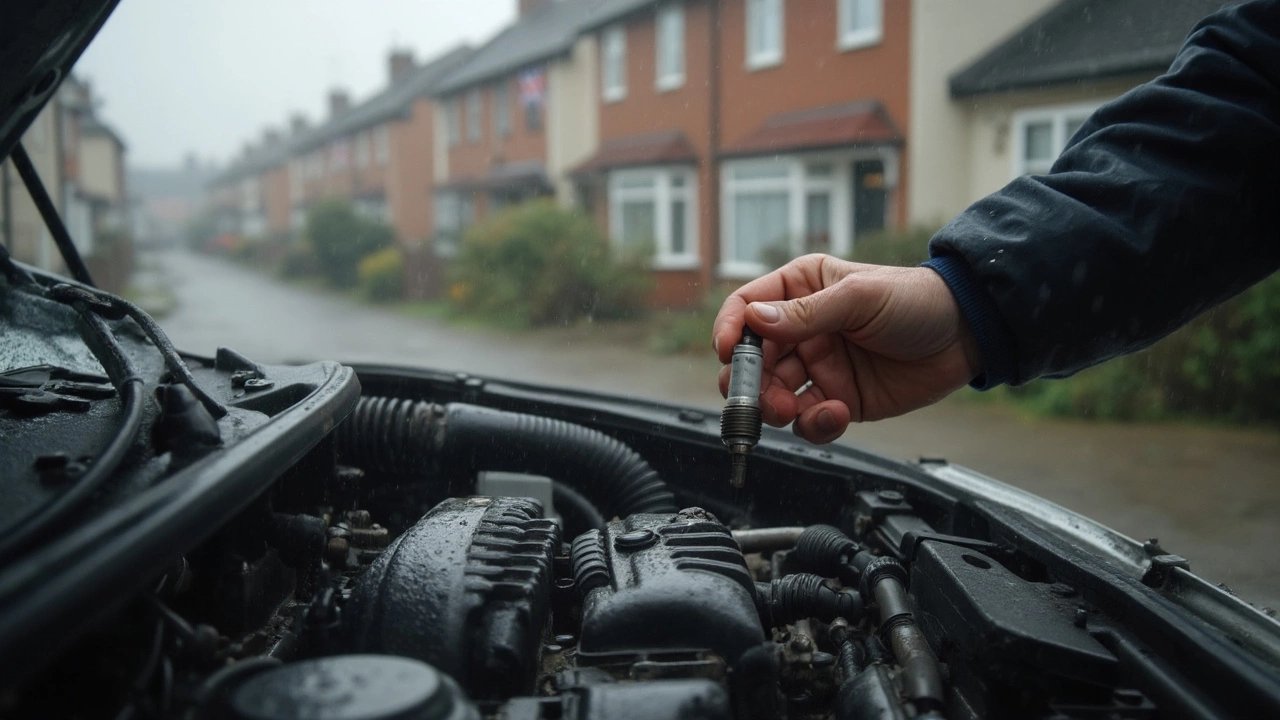
Real-Life Consequences: From Poor Mileage to Engine Damage
Letting your bad spark plugs stick around doesn’t just make your engine grumpy—it can seriously hit your wallet and mess with your car’s guts. Here’s what really happens when you ignore the obvious signs.
First off, poor spark means incomplete combustion. Your engine burns more gas for less power. On average, a car with worn spark plugs can lose up to 30% of its fuel efficiency—yep, that’s like pouring cash right out of your tank. It also leads to rough idling and more frequent stalls, especially if you’re driving in city traffic.
| Issue | Impact |
|---|---|
| Poor Fuel Efficiency | Up to 30% reduction |
| Engine Misfire Risk | Significantly Increased |
| Potential Catalytic Converter Damage | Possible replacement ($1,000+) |
| Increased Emissions | Possible failed inspection |
It gets worse. Misfiring cylinders can dump unburned fuel into the exhaust, wrecking your catalytic converter. That’s a part you don’t want to replace; it’ll cost you over a grand in most shops. On top of that, your car might crank longer before starting or might not start at all in the cold. Any sensors connected to the engine, like your O2 sensor, get thrown off by the extra fuel, and that means more repairs.
And let’s be real: ignoring these small parts leads to bigger headaches. Bad spark plugs force your ignition coil and wiring to work overtime. That added heat and resistance can take other stuff down with it. At worst, you’re looking at engine damage that’s much pricier to fix than a set of fresh plugs.
If your check engine light comes up, don’t assume it’ll go away. Bad spark plugs are one of the top reasons that pesky light shows up after about 80,000 to 100,000 miles, depending on the brand. Skipping this fix means more downtime, bigger bills, and more hassle than anyone wants to deal with.
Pro Tips to Avoid Trouble
Here’s the deal: you don’t have to be a car expert to keep spark plug problems from wrecking your day. A little know-how and routine care go a long way. Most car makers suggest changing spark plugs every 30,000 to 100,000 miles, depending on the type you have. Platinum and iridium plugs last much longer than old-school copper ones, and you can usually find this info in your owner’s manual. Don’t guess—look up what your car actually needs.
Another easy hack: pay attention during oil changes and service visits. Ask your mechanic to check your spark plugs if your car feels sluggish, shakes, or burns more gas than usual. Some folks even check them themselves; just remember to let the engine cool down first. Worn plugs might be covered in deposits, look burnt, or have gaps that are too wide.
- Stick to a service schedule based on your car maker’s recommendation.
- Don’t ignore early warning signs like rough starts or engine misfires.
- Use quality plugs—platinum or iridium if your car needs it.
- Double-check gaps if installing new plugs yourself. Too big or too small makes a real difference.
- Keep an eye (and ear) out for sudden mileage drops or a blinking check engine light.
It’s easy to push off simple maintenance, but remember what’s at stake. Replacing a set of plugs might run you about $50–$150 in parts and labor, but letting things slide can mean serious repairs later. Just look at these average costs:
| Item | Average Cost (USD) |
|---|---|
| Spark Plug Replacement | $50–$150 |
| Fuel Injector Repair | $250–$550 |
| Catalytic Converter Replacement | $950–$2,500 |
If you notice weird noises, a drop in performance, or the engine light pops on while driving with bad spark plugs, fix it sooner than later. Acting early saves money and keeps your car healthier, longer.
When and How to Replace Spark Plugs
If you’re asking when to change spark plugs, here’s the honest answer: don’t guess—check your owner’s manual. For most modern cars, the sweet spot is every 60,000 to 100,000 miles, but some high-performance engines burn through them faster, and older cars may need new ones as soon as 30,000 miles. Don’t believe the old myth that they last forever.
If your car feels rough, takes forever to start, or chows down more gas than usual, it’s probably time. Some folks wait for the bad spark plugs to give up completely, but that just sets you up for bigger headaches—think damaged coils or even clogged catalytic converters.
Changing spark plugs isn’t rocket science. Most DIYers can handle it with a socket wrench and about 30–60 minutes. Here’s how to tackle it:
- Wait until your engine is cool. Hot engines and hands don’t mix.
- Pop the hood and find the spark plugs. They’re usually lined up on top or side of the engine.
- Unplug the spark plug wire or coil pack. Don’t yank—give it a gentle twist and pull.
- Use a spark plug socket to loosen and remove the old plug. Turn counterclockwise.
- Check the gap on your new plug with a gap tool (your manual lists the right size).
- Screw in the new plug by hand first (no cross-threading), then tighten with your socket—not too tight.
- Plug the wire or coil back on. Repeat for all plugs.
Here’s a quick table with average replacement intervals for typical vehicles:
| Type of Vehicle | Average Replacement Interval |
|---|---|
| Modern (2010+) | 60,000–100,000 miles |
| Older (pre-2000) | 20,000–40,000 miles |
| Performance/Sports | 30,000–50,000 miles |
Pro tip: Always change all your spark plugs at once. It keeps your engine firing evenly and avoids chasing problems later. If you’re nervous about DIY, plenty of mechanics will do it for under $100 labor (plus parts). But if you want to save money, do it yourself—it’s an easy win for smoother driving and less hassle down the road.




